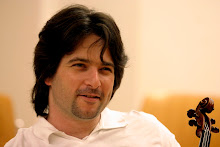When you fire up a computer game you enter a totally imaginary world. It can be a space odyssey or an empire building game or anything else, and you know it is not “real”, it does not exist. Yet, the world which is presented to you, as fantastic as it may be, lies within a set of logical rules. The game, and the “world”, has to make sense to us and we must understand the settings in which we operate in; how many “lives” we have, how we can make “money” or become more powerful etc.
The same rules apply to novels and books or movies. You will not accept the settings of a science fiction novel if they appeared in an autobiography of a real person and an historical drama set in ancient
The same set of rules of reality making applies to playing Bach, Mozart, or any other piece. in this case, you, the performer, are responsible to show the listeners the “rules of the musical piece”, the logic in which the piece is played.
The classical world is full of “do”s and “do not”s and each era, Baroque to twelve-tones system, has its own set of rules to be followed (or ignored, according to your personal taste). The important bit is to stay within the rules you selected to follow so as to make sense in the context of the piece. Whether it is the direction of sequences in Bach and where you break them, the aggressiveness of articulation you use in Mozart, the thickness of your tone in Tchaikovsky or the lushness of your sound in Frank, these are the tools with which you present to the audience their reality and like a good novel or an exciting game, these rules should be apparent and consistent throughout the piece.
This is why the beginning of a piece is so crucial musically: your tone, articulation, phrasing, and even attitude should immediately set the boundaries in which you operate an everything you will change as you progress is relative to what your audience experienced before.

No comments:
Post a Comment